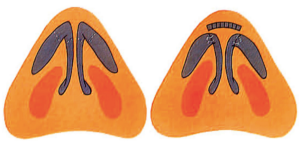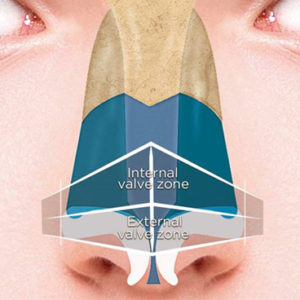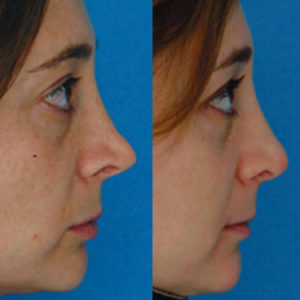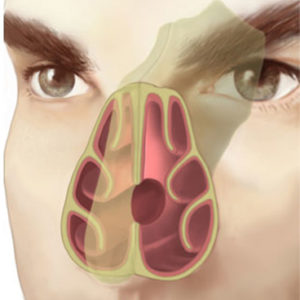Nasal surgery can be traced back to ancient Egyptian hieroglyphics in 600 B.C. Roe was the first to describe a surgical approach to alteration of the nasal tip in 1887, which was later optimized by Joseph—widely recognized as the father of modern corrective rhinoplasty.1 One of the most challenging elements of rhinoplasty is aesthetic optimization… [Read More]
Nasal
Management of the Internal Nasal Valve
Introduction The nasal valve is one of the most important areas that should be addressed when evaluating a patient for nasal obstruction. When it is not assessed properly and only the septum is treated, patients may experience persistent obstruction (1). In fact, nasal valve pathology is the cause of persistent nasal obstruction after septoplasty in… [Read More]
Drooping Tip – Pictures and Video
Patient 1 Complaints of a hump, drooping tip and nasal stenosis. Endonasal approach with septoplasty and hump resection. Pictures taken in the OR before starting the operation and at the end of the operation to illustrate the tip rotation achiewed from a hump resection. Patient 2 The patient has had a severe nasal trauma. Complaints… [Read More]
My Personal Approach and Philosophy
Revision rhinoplasty is a term that encompasses a wide spectrum of problems, from straightforward to complex. In an established revision practice, patients seeking con- sultation include many who have all but lost hope. Commonly, the experienced revision surgeon will find that significant improvement is possible (Fig. 18–1). However, to achieve success, it is important that… [Read More]
Complications in Rhinoplasty
Abstract What holds true for every surgery is also essentially true of rhinoplasty. Knowledge about and awareness of complications and the possible means to handle them is essential for every rhinoplasty surgeon. Referring to the time of occurrence, complications can be divided into early and late complications. Early complications such as bleeding or infection are… [Read More]
Saddle Nose Deformity: Selection of Augmentation Materials and Management
Introduction A saddle nose deformity is characterized by a markedly depressed bony dorsum and an accompanying collapse of the middle nasal vault in relation to the tip and dorsum1. This deformity is the result of a complex interplay of factors leading to the loss of structural support of the nasal septum and upper lateral cartilages,… [Read More]
Septal Perforation
A perforation of the nasal septum is considered a continuity defect in any bone or cartilage portion of the septum, with absence of the mucoperichondral or mucoperiosteal lining. It is often asymptomatic, but it may give rise to multiple uncomfortable symptoms that eventually lead patients to seek help. (Fig. 1) The diagnosis and etiology of… [Read More]
Alar Base Modification
INTRODUCTION / BACKGROUND The alar base plays an important role in the overall appearance and proportion of the nose. An overly wide or flared alar base will lead to a “bottom heavy” nose and disrupt the delicate balance of an otherwise properly executed rhinoplasty. Alar base refinement is often incompletely and inadequately described.1 The techniques… [Read More]
Asian Rhinoplasty 2
Introduction The Continent of Asia consists of several races and ethnic nasal shapes. Asian noses vary in height and width from the noses of the Indian subcontinent with their Caucasian nasal features, the Persian/Middle Eastern nose with their Mediterranean type features to the relatively smaller East Asian type Korean – Chinese nose and the Asian… [Read More]
The Ptotic Tip 2
SynopsisSuccessful intervention for nasal tip ptosis begins with a careful history and comprehensive nasal analysis. Identification and correction of the etiology will allow for surgical modification with predictable and reliable outcomes. Adherence to the tripod theory principles will guide this successful surgical plan. IntroductionA number of different etiologies may contribute to nasal tip ptosis. These… [Read More]








